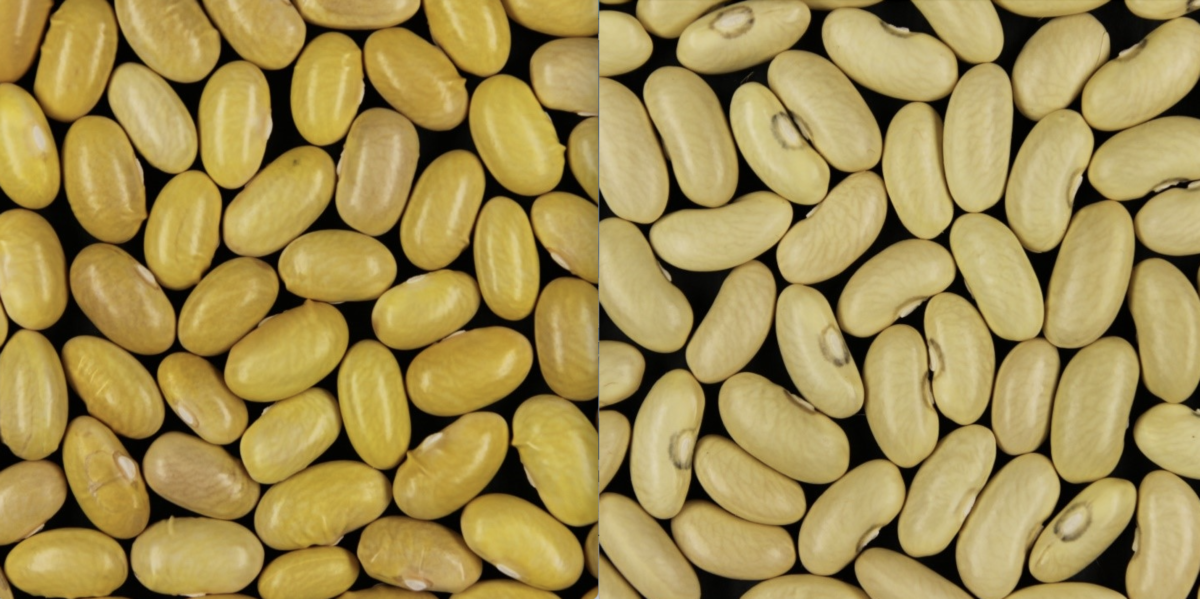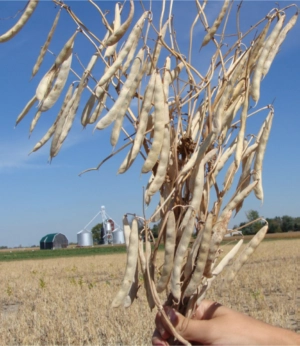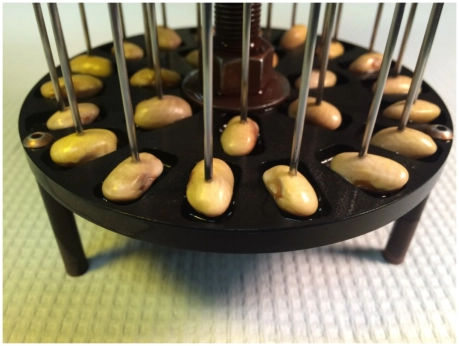Nutritious and cost effective, beans are a great source of protein and essential nutrients. But Americans aren’t eating them. These researchers are trying to change that.

Dry beans are a sustainable protein source, cost effective, offer more control over sodium intake than canned beans and are rich in nutrients such as potassium, calcium and dietary fiber. So, why aren’t Americans eating more of them? It’s probably because they take so long to cook, according to plant geneticists at the United States Department of Agriculture (USDA).
It can take up to two hours to cook dry beans—and that’s not including the sometimes 12-hour presoak. That’s why scientists at the USDA’s Sugarbeet and Bean Research Unit are breeding dry beans that cook in a fraction of the time. Led by plant geneticist and dry bean expert Karen Cichy, they’re putting their hopes in two beans with which most Americans aren’t familiar: the Mayocoba and Manteca, which are both quicker-cooking, and perhaps more importantly, yellow.
Scientists at Cichy’s lab grew and cooked 295 bean varieties of different sizes and shades of yellow in 2018 and 2019. Called the Yellow Bean Collection (YBC), this assembly of beans was sourced from around the world, including Uganda, Colombia and Haiti. The goal? Identify which beans in the YBC cooked the fastest in Michigan and Nebraska, two major bean-producing regions of the US, and which genes in the DNA of those beans gave them their speedy cooking time. The team published its findings in 2022.

Dried bean plants. Photography by Jim Kelly.
Yellow dry beans are already popular in Latin America, the Caribbean and Africa. The popularity of dry yellow beans in other parts of the world could help persuade American farmers to grow a new crop that has potential, but not proven, demand in the US.
The Mayocoba, which originated in Peru, is popular in Mexico and is actually a recognized market class in the US. However, the bean isn’t popular nationwide, although folks in Michigan and the western US, as well as members of the Hispanic community, are probably familiar with and know it as the Peruano. Oval-shaped and plump, it’s often refried because of its creamy texture.
However, traditional Mayocoba beans still require hours in the kitchen. Instructions from bean supplier Rancho Gordo state that cooking time for its Mayocoba can range from one to three hours, depending on how long the beans were soaking beforehand. The new Mayocoba variety will take around 20 minutes to cook (similar to the cooking time for rice) and be high-yielding, which will likely increase its appeal to farmers. As for the Mayocoba’s coat color, Cichy says the group is aiming for a “highlighter yellow.” It’s the shade that appeals to consumers in Mexico and was proven desirable enough in the US to grant a controversial 1999 patent (which was eventually canceled) that claimed monopoly rights over the bright yellow bean color.
The Manteca originated in Chile. It’s a pale yellow and sometimes appears curved because of its hilum ring, the scar on its seed coat that marks where it was once connected to the plant. The bean isn’t a recognized market class in the US, but it’s popular among consumers in Chile for its easy digestibility and perceived low flatulence.
Additionally, a 2018 study, which Cichy helped to author, found that some Manteca varieties are not only fast cooking but also high in iron bioavailability. This means that the iron in the bean is easily absorbed by our bodies. However, the Manteca is “not as pretty as the highlighter Mayocoba,” Cichy concedes—t least, not in bean form. But its appeal may lie in other uses. Because of its muted color, one plan is to mill the Manteca into a flour so it can be used as an ingredient. “When you make a flour, you don’t want the bean to be too colorful because sometimes those colors don’t look nice when they’re milled,” says Cichy. The pale yellow Manteca flour could be perfect for things such as pasta.
A bean flour could also increase consumption among Americans who don’t want or know how to cook dry beans, and a Manteca yellow bean pasta could provide three times the iron bioavailability of chickpea, wheat and gluten free pasta—all while cooking in only five minutes. This is according to the Sugarbeet and Bean Research Unit’s recent report, which also concluded that a single serving of Manteca rotini provides more fiber, calcium and iron compared to chickpea, whole wheat and gluten-free rotini.

Scientists cooked the beans in a machine called a Mattson cooker. A rack of beans, like the one pictured above, is boiled in water. Above each bean is a pin, which pierces the bean once it’s softened. The time it takes for the bean to be pierced is its cooking time. Photography by Jason Wiesinger
According to previous studies, cooking time is probably a trait in yellow beans influenced mostly by genetics and less by the environment, and it can be passed down to future generations through breeding. By identifying associations between cooking time and a molecule called a single nucleotide polymorphism (SNP), which is a common source of genetic diversity, breeders can isolate genetic variations for the fast-cooking trait and use them to create marketable Mayocoba and Manteca beans. The YBC study identified a candidate gene for the fast-cooking trait.
When it comes to achieving the other desirable trait, a bright yellow coat color, scientists have to pay attention to a bean’s post-harvest darkening process. The YBC study found that a bean that doesn’t darken after harvest is also likely to have a fast cooking time. While the non-darkening trait doesn’t entirely account for variation in cooking time, it’s one influential factor.
Achieving an attractive bean color isn’t a challenge reserved for just American plant geneticists. “Seasoned bean breeders all attest that it’s not easy to recover the attractive yellow color as you pursue productivity traits,” writes Clare Mukankusi in an email. Mukankusi is a bean breeder for the International Center for Tropical Agriculture (CIAT) in Uganda, which donated samples it’s collected from various African breeding programs to the YBC study. To East Africans, an attractive broth color after cooking is also important. “In Uganda and most of East Africa, a light brown (chocolate) thick broth is most preferred,” Mukankusi writes.
Since the study’s publication, the lab has bred two Mayocoba and Manteca varieties that were evaluated in field trials and are now awaiting intellectual property protection and approval for release. If everything goes well, Cichy anticipates the two varieties will be commercially viable next summer. From there, it’ll be up to bean producers and sellers to market the beans to American consumers.
The lab is also working on another study that explores the role of fiber in cooking time. “We found that yellow beans, especially the fast-cooking ones, have less insoluble dietary fiber,” Cichy shares from the study that’s yet to be published. “It’s only about six percent less if we compare them to yellow beans that take longer to cook. But we think that less fiber is what makes them cook faster.”
Data shows that legume consumption in the US is rising on average, from 8 pounds per person, per year in 2014, to over 11 pounds per person, per year, in 2017. That still falls just shy of the recommended 1.5 cups of beans, peas and lentils per week (or around 13 pounds per year) for a 2,000-calorie diet, as set by the Dietary Guidelines for Americans.
“I am not saying that people must only eat beans. Certainly not. But beans can have a bigger presence in people’s diets,” writes the YBC study’s lead author Rie Sadohara in an email. She hopes that one day yellow beans will be considered their own category in the USDA’s bean consumption statistics, rather than grouped together with other minor beans. “Seeing beans grown and used at the levels of wheat or potatoes in the US would be great.”
Dios mio, I eat beans every day, and I live in rural Mexico where canned beans do not exist on store shelves. The authors of this, the scientists involved, and anyone who has ever burned a bean [Full disclosure: I totally qualify on the author, scientist, and burned a bean variables.] All of you, just Google “Instantpot” and order one. They’re cheap. It’s a computerized pressure cooker, stew maker, sauteer, etc. etc. and I have never burned a thing since I yielded and bought one. No, it won’t work without electricity, which I have done on the USFS and a… Read more »
No thanks , Ill Eat and Soak the Old fashion way . Good Foods take Time to Prepare .
I love the Peruvian beans. I live in central FL and earlier this year, Wal-Mart was carrying them in dried form. Bought 3 or 4 pounds and stored them in canning jars to keep them safe. Last couple times when I was in local store, they were not in stock. Disappointed, I really enjoy them.
Use a pressure cooker, it takes less than half an hour to cook dried beans to perfection. India, the middle east, and many other countries have always used a pressure cooker. No need to make monster beans.
The dietary guidelines are for 1.5 cups COOKED beans. A general rule of thumb is that 1 pound of dried beans is the equivalent of 6 cups cooked. At 1.5 cups COOKED per week, a person should consume 1 pound of beans every four weeks, or 13 (not 39) pounds per year.
Just bought some Mayocoba beans recently from Rancho Gordo – delicious! As a lifelong bean lover, in previous decades I cooked beans in a regular pressure cooker and now use an Instant Pot. Once a week I soak and cook a big pot of beans that I eat during the week in a variety of recipes. Easy, inexpensive, and enjoyable way to prepare delicious meals.
Yes